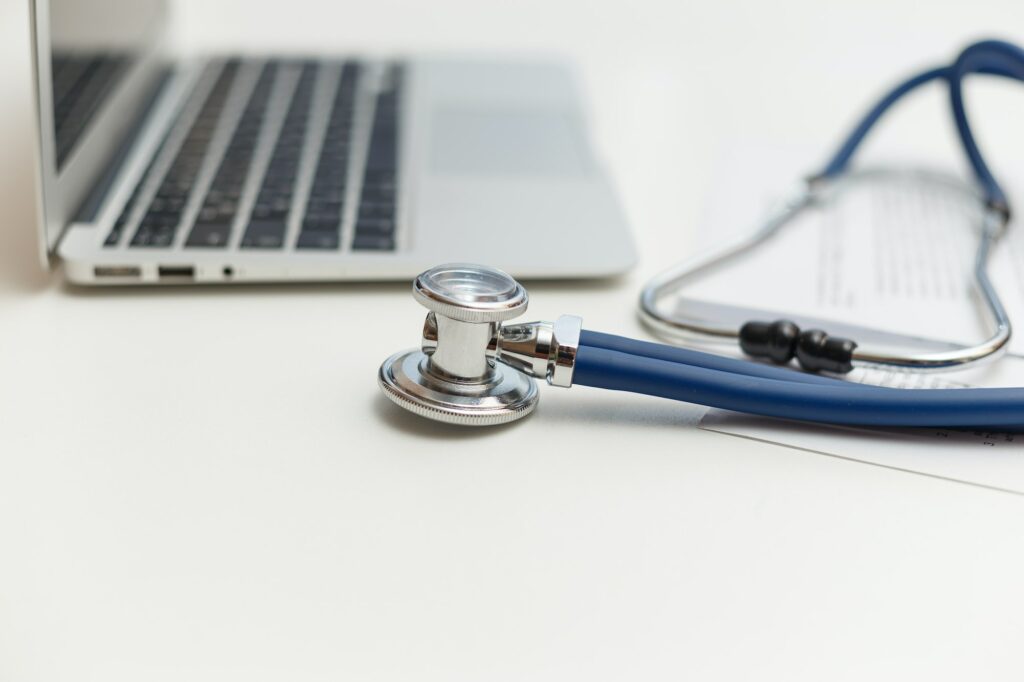Anti-Money Laundering (AML) in the healthcare sector is a critical area of focus aimed at preventing and detecting illicit financial activities within the healthcare industry. The integration of AML measures within healthcare systems helps safeguard against money laundering, fraud, and other financial crimes that can undermine the integrity of healthcare institutions and compromise patient safety.

Table of Contents
ToggleOverview of Anti-Money Laundering (AML)
Anti-Money Laundering refers to the set of regulations, policies, and procedures implemented to prevent the generation of funds through illegal activities and the subsequent integration of those funds into the legitimate financial system. Money laundering involves disguising the origin, ownership, or control of illegally obtained money, making it appear as if it comes from legitimate sources.
AML regulations are primarily designed to combat financial crimes such as drug trafficking, corruption, terrorist financing, fraud, and organized crime. These regulations promote transparency, accountability, and due diligence in financial transactions, making it more difficult for criminals to exploit the financial system for their illicit activities.
The significance of AML in healthcare
Money laundering within the healthcare sector poses serious risks, both in terms of financial stability and patient safety. Criminals may attempt to exploit healthcare institutions, insurance companies, and medical professionals to launder money, commit fraud, or engage in other illicit financial activities. AML measures in healthcare are crucial for the following reasons:
1. Preventing fraud and abuse
The integration of AML protocols helps identify and prevent fraudulent activities within the healthcare system. By monitoring financial transactions and analyzing patterns, AML measures can detect suspicious behavior indicative of fraud, including billing schemes, kickbacks, and identity theft.
2. Protecting patient safety
Money laundering and fraudulent practices in healthcare can compromise patient safety. Illicitly obtained funds may be used to provide substandard medical care, purchase counterfeit medications, or support unregulated healthcare facilities. AML safeguards can help ensure that funds used in healthcare services are legitimate and derived from legal sources.
3. Safeguarding healthcare institutions
AML regulations help protect healthcare institutions from becoming unwitting participants in money laundering schemes. By implementing robust due diligence measures, institutions can identify and report suspicious transactions, mitigating the risk of legal and reputational damage associated with money laundering activities.
4. Enhancing regulatory compliance
The healthcare industry operates under strict regulatory frameworks, and compliance with AML regulations is an essential aspect of meeting these requirements. By adhering to AML guidelines, healthcare institutions and professionals demonstrate their commitment to ethical practices, integrity, and compliance with legal obligations.

Key components of AML healthcare
To effectively combat money laundering and financial crimes within the healthcare sector, the implementation of AML measures involves several key components:
1. Know your customer (KYC)
KYC procedures require healthcare institutions to verify the identities of their customers and maintain updated records of their clients’ personal information. This includes conducting due diligence checks, verifying the legitimacy of business relationships, and monitoring any changes in customer behavior or transaction patterns.
2. Suspicious activity monitoring
Healthcare organizations should establish systems to monitor financial transactions and identify suspicious activities that may indicate money laundering or fraud. This involves employing sophisticated data analytics tools to detect anomalies, patterns, and trends in financial data.
3. Reporting obligations
Healthcare professionals and institutions are often obligated to report suspicious transactions or activities to the appropriate authorities. These reporting obligations vary by jurisdiction but are typically in line with local AML legislation. Reporting enables regulatory bodies to investigate potential financial crimes and take appropriate action.
4. Training and awareness programs
Effective AML compliance requires ongoing education and training programs for healthcare professionals and staff. These programs help enhance awareness of AML risks, familiarize individuals with their legal obligations, and equip them with the knowledge and skills to identify and report suspicious activities.
5. Collaboration and information sharing
Cooperation and information sharing between healthcare institutions, regulatory agencies, and law enforcement entities are crucial for combating money laundering in the healthcare sector. Collaborative efforts enable the exchange of intelligence, identification of trends, and coordination of actions to prevent and detect financial crimes.
Conclusion
Anti-Money Laundering (AML) measures play a vital role in protecting the integrity of the healthcare sector. By implementing robust AML protocols, healthcare institutions, professionals, and regulatory bodies can mitigate the risk of money laundering, fraud, and other financial crimes. These measures not only safeguard the financial stability of healthcare organizations but also protect patient safety and ensure compliance with legal obligations. The ongoing commitment to AML healthcare is essential for maintaining trust in the healthcare system and safeguarding the well-being of patients worldwide.
FAQ (Frequently Asked Questions)
Q1: What is money laundering, and why is it a concern in healthcare? A1: Money laundering is the process of disguising the origin, ownership, or control of illegally obtained funds to make them appear legitimate. It is a concern in healthcare because criminals may exploit the sector to launder money, commit fraud, or engage in other illicit financial activities, which can compromise patient safety and the integrity of healthcare institutions.
Q2: How does anti-money laundering (AML) benefit the healthcare sector? A2: AML measures benefit the healthcare sector in several ways. They help prevent fraud and abuse, protect patient safety, safeguard healthcare institutions, and enhance regulatory compliance. AML protocols ensure transparency, accountability, and due diligence in financial transactions, reducing the risk of financial crimes within the healthcare industry.
Q3: What are some examples of suspicious activities in healthcare that may indicate money laundering or fraud? A3: Examples of suspicious activities in healthcare include billing schemes, such as overbilling or phantom billing, kickbacks and bribes, identity theft, insurance fraud, and transactions involving unregulated healthcare facilities or counterfeit medications. Unusual financial patterns or sudden changes in transaction behavior can also raise suspicions.
Q4: What are Know Your Customer (KYC) procedures, and why are they important in AML healthcare? A4: KYC procedures require healthcare institutions to verify the identities of their customers and maintain updated records of their personal information. It helps ensure that institutions have a clear understanding of their customers, business relationships, and the legitimacy of the funds involved. KYC is important in AML healthcare to detect and prevent money laundering by establishing robust customer due diligence processes.
Q5: How can healthcare professionals and institutions report suspicious activities related to money laundering? A5: Reporting obligations vary by jurisdiction, but healthcare professionals and institutions typically report suspicious activities to designated authorities, such as financial intelligence units or regulatory bodies. They may have reporting mechanisms in place, such as hotlines or online portals, to facilitate the reporting of suspicious transactions or behaviors.
Q6: How can healthcare organizations monitor and identify suspicious financial activities? A6: Healthcare organizations can employ various methods to monitor and identify suspicious financial activities. This includes implementing advanced data analytics tools to detect anomalies, patterns, and trends in financial data. Regular monitoring of transactions, conducting internal audits, and training staff to recognize red flags can also help in identifying suspicious activities.
Q7: Are there penalties for non-compliance with AML regulations in the healthcare sector? A7: Penalties for non-compliance with AML regulations vary by jurisdiction. Healthcare organizations and professionals may face legal consequences, financial penalties, reputational damage, loss of licenses, or exclusion from participating in government healthcare programs. It is crucial for healthcare entities to adhere to AML regulations to avoid these penalties and maintain the integrity of their operations.
Q8: How can healthcare professionals and staff stay updated on AML regulations and best practices? A8: Staying updated on AML regulations and best practices can be achieved through ongoing education and training programs. Healthcare professionals and staff can attend AML workshops, conferences, and online courses. They can also access resources provided by regulatory bodies, industry associations, and AML experts to stay informed about the latest developments and requirements in AML healthcare.
Q9: How important is collaboration and information sharing in combating money laundering in healthcare? A9: Collaboration and information sharing among healthcare institutions, regulatory agencies, and law enforcement entities are vital for effectively combating money laundering in the healthcare sector. Sharing intelligence, coordinating efforts, and exchanging information on emerging trends and typologies enhance the overall effectiveness of AML measures and contribute to a stronger defense against financial crimes.
Q10: Does AML compliance hinder or delay patient care in any way? A10: AML compliance should not hinder or delay patient care when implemented efficiently. By integrating AML measures into standard operational procedures, healthcare institutions can ensure that patient care remains a priority while still meeting regulatory requirements. Efficient systems, automated processes, and well-trained staff can help strike a balance between AML compliance and delivering quality healthcare services.

